Pet sitting, clipping, and landscaping are just four of the small businesses you can start. Here are 90 of the best small business ideas, and how you can get started today.
Key takeaways
- 99.9% of businesses in the U.S. are small businesses with 73% operating online.
- The U.S. pet industry is expected to grow to $157 billion in 2025.
- Maintenance service work can earn $25–$100 per hour depending on job type.
- Professional cleaning services can generate $100–$200 monthly from one recurring weekly home.
- Voice actors can earn $3,000+ monthly with consistent work or audiobook projects.
Small businesses worth starting in 2026 include pet sitting, social media management, clipping, landscaping, car detailing, selling SaaS, digital marketing, and more. They’re also ideal if you’re dreaming of being your own boss.
Starting a small business (online, from home, or in your local area) gives you more control over your career, financial freedom, and a better work-life balance. The hard part is knowing where to begin.
In this guide, we’ve rounded up 90 small business ideas to suit every budget.
Some can be launched for less than $100, while others require more upfront investment but have the potential to scale fast.
Don't stress: we’ll help you find the right fit and give practical tips on how to get started and what to expect along the way.
Best small business ideas for anyone looking to be their own boss
If you're ready to start a side hustle or online business, you're in the right place. From manual skills to digital hustles, the options are pretty endless.
Research shows that 99.9% of businesses in the U.S. are small businesses (let that sink in), and 73% of them operate online.
Below is a quick comparison of the main small business types, giving you a snapshot of what’s required to get started and what you could realistically earn:
| Business type | Best for | Startup cost | Income potential |
|---|---|---|---|
| Freelance services | Writers, designers, developers | Low ($0–$500) | $500–$10,000+/month |
| Digital products | Creators, educators, marketers | Low ($0–$300) | $1,000–$100,000+/month |
| In-person services | Handy, tech-savvy, local pros | Med ($200–$2,000) | $25–$100/hr or $2K–$10K/mo |
| Ecommerce | Hustlers, curators, resellers | Med ($500–$3,000) | $1,000–$20,000+/month |
| Content-based | Bloggers, influencers, experts | Low ($0–$500) | $500–$15,000+/month |
| Product-based | Makers, foodies, hobbyists | Med ($500–$5,000) | $2,000–$10,000+/month |
| Niche services | Coaches, tutors, pet lovers | Low–Med ($0–$2,000) | Highly variable |
Note: Each type of small business comes with its own startup costs, earning potential, and skill requirements.
To make it easier to identify an idea that fits your strengths, interests, and budget, we've broken the list into categories, from businesses you can launch cheaply to home-based hustles, creative endeavors, and more.
Let's get into it.
Low-cost small business ideas
You don’t need a big budget to get started. These ideas are affordable to launch and great for testing the waters or building a small business with minimal risk.
1. Maintenance service work
Manual skills are always in demand, and if you have them, you could make an income with a maintenance or handyperson business.
One of the most important things that I've learned is to connect with the customer on a personal level, and always referring them back to myself, whether that's via a phone number or a social media profile.
— Fraser Singleton, repair technician of over ten years
Start small: post your services on local socials, community boards, or hit up homeowner associations, schools, government sites, even retirement villages.
- What you need: Tools (drill, wrench, hammer, level, etc.), practical know-how, and a basic online presence for bookings.
- How much it costs: Tools can be acquired over time—a basic kit for ~$300. Marketing ~$50–$100.
- How much you can earn: $25–$100/hour, depending on job type. Monthly revenue can range from $1,000–$5,000+ with recurring contracts.
2. Personal assistant business
A personal assistant business helps busy people handle tasks they don’t have time for, from admin and errands to scheduling, bill payments, and day-to-day coordination.
If someone’s overwhelmed, you step in and keep their life running smoothly.
- What you need: Strong organizational and communication skills, a laptop or phone, and reliable transportation (for in-person tasks).
- How much it costs: Startup costs are near zero. You may need to pay for a background check or listing fee on certain freelance platforms.
- How much you can earn: $15–$50/hour. Working just 10 hours a week can earn $600–$2,000/month, depending on your clientele.
3. Sell cleaning services
Cleaning services exist because people would rather pay someone to clean than do it themselves.
Homes, offices, cafes: they all need regular upkeep, which means consistent demand.
Finding clients for your cleaning business is honestly easier than you think: slap together a quick website or social page, and jump into local community groups where people are already looking for cleaners.
I started 12 months ago, and now I have 10 cleaning staff doing 6-8 cleans a day.
Start with social media platforms like Facebook, Insta and TikTok.
When you get your first lot of clients make sure you take lots of pictures and videos, as people want to know you have clients and see different homes in your content.
– Hailey Rebecca, Professional Cleaner from Australia
- What you need: Basic cleaning supplies, transportation, and liability insurance.
- How much it costs: Initial supplies can cost $100–$300. Liability insurance ~$200/year.
- How much you can earn: $25–$60/hour, depending on service level and area. One recurring weekly home could earn you $100–$200/month on its own.
4. Become a pet sitter

Pet sitting is straightforward: you care for pets while their owners are away or busy. It’s flexible, low-cost, and backed by a fast-growing pet industry.
This is a low-cost small business idea that can be tailored to your lifestyle. You could offer pet sitting from your home, or care for the pet in their own home.
The U.S. pet industry is expected to grow to $157 billion in 2025, with the global pet care market valued at $273.42 billion.
But that's not all: you can choose to offer short stays (like a doggy daycare service), extended stays (vacation bookings), or even just a one-hour dog walking service.
Tip: A wide range of services attracts a wide range of clients.
I have a friend who is a dog walker, and makes a killing doing very little work. The most important part is being extremely reliable and quick to respond to messages.
— Redditor from r/sidehustle
- What you need: A safe space for pets (if hosting), basic pet care knowledge, and good reviews. Optional: pet first-aid certification.
- How much it costs: Startup cost is extremely low—often under $100 for listing accounts and marketing flyers.
- How much you can earn: $20–$75/day per pet. Full weekends or holidays can bring in $300+ if you have multiple pets.
5. Professional organizing business
A professional organizing business helps people declutter, streamline systems, and make their homes functional again. It’s perfect for anyone who naturally thinks in “layouts” and fixes messy spaces with ease.
You could help new parents get their homes ready before the baby arrives — a perfect business idea for women who've “been there, done that.”
Or, get creative with pantry makeovers: swap messy jars and random packages for sleek, space-saving containers that actually look good.
- What you need: Strong sense of aesthetics, spatial planning skills, basic storage containers, and confidence in client homes.
- How much it costs: Startup under $200: containers, labels, minimal marketing.
- How much you can earn: $30–$100/hour. A single project could bring in up to $300–$1,500, depending on size and location.
6. Start a car wash business
A car wash business provides basic exterior cleaning and convenience for people who don’t want to do it themselves.
With a bucket, cleaning cloths, and some cleaning products, you can start a car washing business today.
The tricky part is finding clients, but advertising on local community boards, asking other small businesses to put up your flyer, and posting your business offering all over social media are good methods.
Why not offer interior detailing services, too, and boost your earnings?
- What you need: Buckets, microfiber cloths, soap, wax, vacuum. Can be mobile or set up in your driveway.
- How much it costs: $100–$300 to start. Focus on quality tools and products.
- How much you can earn: $20–$100 per car, depending on service. 5 cars/week = $500–$2,000/month.
7. Car detailing services
Car detailing is simply taking the car wash up a notch: think in-depth cleaning of the interior and exterior, maintenance, fixing minor defects and scratches, and adding enhancements to protect the vehicle from future defects.
In terms of marketing, your approach should be the same as that of car washing. SEO, social media, and local community boards will be your bread and butter.
When I first started it was mostly like mobile carwash working for some other dude in high school, me and a couple of my friends.
And after that, we decided to start our own thing, got a truck, water tank generator pressure cleaner, and then we basically just kind of did the same model.
– Dennis, Palm Beach Car Detailer
- What you need: Interior shampooer, polishing gear, steam cleaner, and specialized cleaning solutions.
- How much it costs: $500–$1,500 to launch if going beyond basic washing.
- How much you can earn: $75–$300 per job. High-end clients and fleet contracts can push monthly earnings into $5,000+ territory.
8. Become a personal shopper
Personal shoppers choose a niche (like clothing, furniture, jewelry, or homewares), and then help their clients find these items.
Some people may hire personal shoppers for inspiration on how to style themselves or their homes, while others work with personal shoppers to help source and secure rare or valuable items.
To get started as a personal shopper, set up an aesthetically pleasing website to show off your style and expertise.
- What you need: Strong sense of style, trend awareness, reliable communication, and possibly affiliate deals or resale partnerships.
- How much it costs: Website, branding, and transportation (~$200–$500).
- How much you can earn: $25–$100/hour or flat project fees ($200–$1,000+). Upsell with curated lookbooks or moodboards.
9. Try voice acting
Voice acting means recording narrations, ads, characters, or audio content for clients, and demand is high thanks to podcasts, video content, audiobooks, and online creators.
All you need to start is a decent mic, and later you can level up with a small home studio to boost your rates.
Got a good voice? Even better — if not, a few voice acting classes can get you there.
Begin by practicing your range – narrating YouTube scripts, reading children's stories, or mimicking commercial tones.
Use these to record demo reels, which you post on sites like Fiverr, Upwork, and Voices.com. There are so many gigs out there!
— Experienced voice actor
Be proactive by reaching out to podcasters, YouTubers, or anyone needing voiceovers.
- What you need: A good microphone, soundproof space or booth, voice acting demo reel, and voice training (optional but helpful).
- How much it costs: $200–$1,000 startup. Good mic and DAW software ($200), booth setup ($100–$400), training (~$100–$300).
- How much you can earn: $100–$500 per gig starting out. Established voice actors can earn $3,000+/month with consistent work or audiobooks.
10. Sell custom engraved gifts
Custom engraving lets you create personalized products that people buy for gifts and keepsakes. It’s a craft-based business with strong online demand.
People value items that feel unique and meaningful, and with engraving tools being quite affordable, this can be an excellent low-cost small business idea.
It’s best to start with a wider range of products (mugs, jewelry, flasks, plaques) and then move on to the one that sticks and that you like to work on.
- What you need: Engraving tool (laser or rotary), inventory to engrave (can also just offer an engraving service), and design software
- How much it costs: ~$300-$1,500 for engraving equipment; inventory and materials ~$100-$500
- How much you can earn: $10-$50 profit per item; successful sellers can earn $500-$5,000/month depending on volume
11. Offer mobile pet grooming
Pet grooming has always been big, but it’s become more popular through social media, with many mobile pet grooming stations uploading short-form content and getting millions of views.
There are quite a few startup costs, as you’ll need to account for fuel and maintenance expenses — but it’s still a nice little business to start.
You can start by grooming the pets of your friends or colleagues, creating videos while you do so, and then traveling around the country offering your services.
- What you need: A van outfitted for grooming, grooming tools, certifications in pet care (optional)
- How much it costs: $5,000–$25,000+ if converting a van; basic gear costs $500–$1,000
- How much you can earn: $30–$150 per session; solo groomers can make $2,000–$6,000/month depending on area and frequency
12. Start a pet-friendly travel service
A pet-friendly travel service helps people plan trips that include their pets, from flights to accommodation to itineraries.
It’s niche, in-demand, and underserved.
Think about it, the options are pretty open: You could run a booking consultancy, a blog with premium guides, or even partner with hotels to package pet-inclusive offers.
- What you need: Knowledge of travel booking platforms, partnerships with hotels or airlines, and an online presence
- How much it costs: $100-$500 for a basic website and marketing.
- How much you can earn: $1,000-$7,500 per month through commissions and service fees.
13. Woodworking
A woodworking business creates handmade furniture, décor, and custom builds (and social platforms are fueling huge demand for artisanal pieces).
If you’re already into working, you probably already have all the tools you need, so you can create some home goods or furniture on demand.
And if you don’t want to sell locally, you can open a shop on Etsy or even Whop and start selling your items there.
Either way, try to capitalize on the trends and start posting your work on social media ASAP.
- What you need: Woodshop tools (saws, sanders, clamps), workspace, raw wood materials
- How much it costs: $1,000–$5,000+, depending on tools and scale; smaller setups possible under $1,000
- How much you can earn: $5–$100+ per product; monthly income ranges from hobbyist level to $5,000+ if operating at scale
Whether you’re offering cleaning, pet sitting, or any kind of service, Whop’s Calendar Bookings app makes it simple to schedule time and get paid in one step
Perfect if you want to streamline client bookings and payments in one central place
14. Rent out unused gear and equipment
Gear rental turns items people use occasionally – like cameras, drones, tools, sports gear, and party supplies.
Not everyone wants to own everything they use (seriously, who buys a snowboard for a 2-week trip?), and renting stuff you already own is an easy way to make a recurring income.
- What you need: A collection of rentable gear and a booking/payment system.
- How much it costs: $0 to $1000+, depending on the type of equipment you start with.
- How much you can earn: $500-$15,000+ per month based on demand and inventory size.
Online small business ideas
These online gigs are all about flexibility and scale – you can reach customers anywhere, skip the messy overhead of a physical space, and run things from your laptop (or even your couch).
15. Offer digital decluttering
Digital decluttering helps clients sort files, streamline apps, reorganize cloud storage, and create simple digital systems. It’s an “organizing” service, just for their tech.
Sure, it might not sound like fun, but for people who love organization, simple tasks, and locking in while listening to music or a podcast?
This is an easy wfh hustle.
- What you need: Knowledge of productivity tools, cloud storage, and digital systems.
- How much it costs: Less than $200 for a website and marketing.
- How much you can earn: $1,000-$6,000 per month through one-on-one services or packages.
16. Write resumes

Resume writing helps job seekers create polished, employer-ready applications. You can offer rewrites, templates, cover letters, and LinkedIn makeovers.
When you’re hunting for a new job, your resume can make or break your chances. It’s the first thing employers see, and for a lot of people, putting one together feels like pulling teeth.
I know federal resume writers who charge $700-$1,200 for one resume. My prices ranges from $300-$600 (entry level, journeyman, etc).
People really, really want secure federal government jobs.
– Redditor u/kenusn
Freelance writers can turn their skills into cash by helping job seekers polish up.
- What you need: Writing skills, understanding of job markets, templates, and, optionally, a LinkedIn presence.
- How much it costs: Under $100 if DIY; possibly $200–$500 for training or branding.
- How much you can earn: $100–$500 per resume, with upsells for cover letters, coaching, or LinkedIn makeovers.
How to make money writing: Expert tips, tools, pay guide & more
17. Manage social media
Social media management helps brands grow, post consistently, run content, and stay visible online – meaning strong demand for anyone who actually knows what they’re doing.
Just decide which social media management services you want to offer: it could be posting content, writing captions, designing graphics, making reels, working with influencers, running UGC campaigns…
Basically, anything that helps brands look good online.
- What you need: Experience with content creation, scheduling tools (like Buffer or Later), and a strong grasp of branding.
- How much it costs: $100–$500 for tools and branding.
- How much you can earn: $500–$5,000+/month, depending on clients, platforms managed, and deliverables.
18. Try affiliate marketing
Affiliate marketing is an online business you can start with almost zero upfront cost – and if you’ve got a solid social media following, you can quickly convert audiences into cash.
Here’s how it works: you post a link (usually with a discount code) for a product or service. Every time someone buys through your link, cha-ching — you earn money.
Yes, it’s that simple.
Here's the quick start: Pick your niche, and build a website or YouTube with valuable content (reviews, comparisons) where you sprinkle affiliate links.
Focus on a smaller, engaged audience within your niche. Share helpful content and become a trusted source. Collaborate with other creators in your niche for wider reach.
– Affiliate mentor Alex Jonathan
Hot tip: Never pay upfront fees to join programs.
- What you need: A niche audience (via blog, YouTube, or social media), affiliate links from Whop or platforms like Amazon, ShareASale, or ClickBank.
- How much it costs: $0–$300+ for domain, hosting, and optional email tools or traffic ads.
- How much you can earn: $100–$10,000+/month depending on traffic volume, trust, and commissions.
19. Create content
Creating content means building an audience on platforms like YouTube, TikTok, Instagram, or through blogs and podcasts — then turning that audience into a business.
Brand deals help, but the highest income comes from memberships, paid communities, and your own products.
My approach when I got started was to really focus on content. I realized that in order to sell anything, you have to make sure that you're putting out the right content to the right people in order to sell anything.
- OnlyTapa
Build a space where your followers pay for access to your content, and suddenly your passion becomes a steady income stream.
- What you need: A phone or camera, editing tools (CapCut, Final Cut, etc.), and a clear niche or persona.
- How much it costs: $0–$1,000+ depending on quality of gear and editing setup.
- How much you can earn: $0–$20,000+/month depending on reach and monetization(brand deals, affiliate, merch, YouTube AdSense, etc.).
20. Become an esports coach or gaming companion
Esports coaching and gaming companionship both monetize your gameplay experience: you either teach players how to improve, or you get paid to play with them.
You've probably heard people say that your gaming isn't going to get you a job, but that's actually not true – not these days.
You can legitimately get paid for gaming.
- Become an esports coach: Watch other people's games, give them input, and play with them to improve their gaming skills.
- Be a paid gaming buddy: People will pay you for playing games with them the way they want (so you might end up doing the most boring stuff, but hey, it's still a game).
No matter which one you pick (maybe both), having some social media presence helps a lot.
- What you need: Hundreds or thousands of hours of experience in the game you want to offer your services for.
- How much it costs: $0, although this is assuming you already have a microphone and a webcam.
- How much you can earn: Good esports coaches can earn up to $5,000 per month; gaming buddies earn a lot less, closer to $5 to $15 an hour.
21. Work as a productivity consultant
If you're good at time management, you could work as a productivity consultant and help those people get back on track.
People hire productivity consultants to organize their workloads, to help them cram before big exams, and everything in between. Basically, your job is to analyze what they're currently doing and find ways to improve it.
This includes elements of digital decluttering, too. You'll help them set up systems that support being productive, such as setting up Notion, Todoist, or ClickUp.
You might also need to learn some AI prompt engineering to help your clients out with automation. The more you can do, the better the pay.
- What you need: Great time management and knowledge of various productivity/workflow-related apps.
- How much it costs: $0-$300, depending on whether you need to pay for app subscriptions or equipment like a webcam
- How much you can earn: $50-$500 an hour
22. Do online trading
Trading isn’t for the faint of heart – it’s high-risk, but also high-reward, and can make serious money if you know what you’re doing.
You’ll need a solid grip on financial markets, discipline, and the right tools or algorithms to get an edge.
Sure, you can be your own boss, but the emotional pressure and risks are intense. Make sure you’re ready before diving in.
The easiest thing to do is find a company where you believe in its long-term success and growth and invest every time the stock takes a downward hit, so you're buying at a discount.
— Mike Poarch, experienced trader and educator
- What you need: A brokerage account (stocks, forex, crypto), a trading strategy, and risk management skills. Join a trading community for advice.
- How much it costs: $0–$1,000+ initial capital, depending on market and approach.
- How much you can earn: Highly variable. Many lose money; skilled traders can make $1,000–$100,000+ per month, but with significant risk.
23. Start dropshipping
Dropshipping lets you sell products without storing inventory. You run the online storefront and marketing; your supplier handles manufacturing, packing, and shipping.
It's an industry expected to reach $464.44 billion in 2025, with projections showing the market will exceed $1.2 trillion by 2030.
Say we find a pair of sunglasses for $6. Instead of just slapping these online, we actually build a brand around it. Now, instead of paying $6, customers will buy them for $30+.
At the end of the day, you're just the middleman.
— Roonie Jourv, Savage Ecom founder
Ronnie Jourv from Savage Ecom
Basically, you partner with a wholesaler or manufacturer who takes care of storage, picking, and packing.
It's up to you to take care of creating your online store so that customers can view and purchase your products, marketing efforts, sales, and customer support.
When done well, dropshipping can be an extremely lucrative remote business.
Hot tip: Test product quality yourself, and avoid 30+ day shipping times
- What you need: A Shopify store, a dropshipping idea, a product to test (usually from AliExpress or similar), and basic ad skills.
- How much it costs: $300–$2,000+ for store setup, testing, and ads.
- How much you can earn: $0–$50,000+/month if a product hits, but many stores fail without optimization.
24. Do print on demand

Print-on-demand lets you upload designs to a POD service that only prints each item when someone orders, so you never hold inventory (similar to dropshipping).
First, find a POD service that hosts your storefront on their website. Then, upload your artwork, and when a customer chooses one of your designs, it is printed onto the product.
You can sell mugs, t-shirts, bags, posters, and more.
Sell on Whop and use the Merch app to list print-on-demand products in the same storefront as courses, communities, coaching, and any other online offers.
POD is valued at $12.96 billion in 2025 and projected to reach $102.99 billion by 2034, growing at an annual rate of 26%. In other words? It's a good time to get in.
My partner and I started our POD hustle while broke, just a laptop, free Canva account, and long nights learning Etsy. It’s definitely possible to hit $200–300/month, but it takes consistency.
— Redditor u/Load_Ordinary368
- What you need: Design ideas, a platform (like Printful or TeeSpring), and an audience or traffic source.
- How much it costs: $0–$500 for design tools and optional store (Shopify, Etsy).
- How much you can earn: $50–$10,000+/month depending on niche, designs, and traffic.
25. Make money as a translator
Translation services convert written or spoken content between languages – anything from documents to live call interpretation.
You can always use machine translation tools, but remember they're not always as precise as a human translator.
It can definitely speed up your work, just make sure that you double-check everything and use it wisely.
— Karina Egle, PR specialist at Whop and freelance translator of ten years
This avenue can be made even more lucrative if you are a specialist translator working in the medical or government fields.
- What you need: Fluency in two or more languages and the ability to handle written or verbal translation accurately.
- How much it costs: Nothing if you already know the languages; certifications may help.
- How much you can earn: $20–$100/hour or $500–$5,000+/month depending on demand and language pairs.
26. Sell ebooks
Selling ebooks means writing a book (fiction, how-to, niche guides) and distributing it through platforms like Whop, Amazon KDP, or Gumroad.
Writing and selling a book used to feel impossible — agents, publishers, endless pitches. Now? The internet lets anyone publish their own ebook.
Jeremie Lander from Better Finance Today LLC
I use my following from social media, whether it be YouTube, TikTok, and Instagram, to drive sales directly to these books.
I don't have any direct content plan, and I don't have any hardcore sales tactics.
— Jeremie Lander, 3 x published ebook author
But don’t get it twisted: the hustle doesn’t stop when the writing’s done. You’ll still need to pick the right platform, market it, engage with readers, and keep the momentum going.
- What you need: A well-written ebook (how-to, niche guides, fiction), a sales funnel, and distribution (Whop, Amazon KDP, Gumroad, etc.).
- How much it costs: $0–$500 to format, design, and optionally run ads.
- How much you can earn: $100–$20,000+/month, depending on audience size and topic.
27. Become a virtual assistant
Virtual assistants handle admin, scheduling, inboxes, research, content tasks, and more — all remotely.
I've been a virtual assistant for around two years, and I think it's a really good way to make money online. I get to help people, I get flexible hours, and I get to work from home.
— Matthieu Ratrimoson, freelance virtual assistant
VAs handle anything from social media posts and appointment scheduling to admin tasks or newsletter writing.
The best part? It’s your business, so you get to pick what services you offer and how you run the show.
- What you need: Admin, communication, and organization skills. Services can range from email support to calendar management and even research.
- How much it costs: Very little—just a reliable laptop and internet.
- How much you can earn: $500–$5,000/month,, depending on clients, specialization, and hours.
28. Sell digital downloadables
We already covered ebooks, but there is a whole world of digital downloadables like Notion templates, Chat GPT plugins, artwork, and so much more.
The market for digital downloadables is huge and shows no signs of slowing down, so this is a promising small business idea for anyone with creativity and entrepreneurship.
- What you need: Templates, planners, spreadsheets, or digital tools people want. Canva, Notion, and Google Sheets are great for this.
- How much it costs: $0–$300 to build a site or list products on Etsy/Gumroad.
- How much you can earn: $100–$10,000+/month depending on product quality and marketing.
Read this to understand how to make passive income selling digital products
29. Start freelance writing
Freelance writing involves creating content for clients like blog posts, scripts, ads, emails, social captions, ebooks, and more.
In order to set yourself up for the long run and carve out a space, it's really important to have a niche established.
— Keisha Singleton, freelance writer and Senior Editor at Whop
Once you’ve got experience, you can raise your rates, add more services, or even launch your own content agency.
Every business needs content — from YouTube scripts to blog posts to social media captions — and freelance writers are the backbone of it all.
Pro tip: Pick a niche you know well so you can start making money faster.
- What you need: Strong writing skills, a portfolio, and platforms like Upwork, Contently, or direct clients.
- How much it costs: $0–$200 for portfolio setup or training.
- How much you can earn: $500–$10,000+/month depending on niche, rates, and volume.
30. Become a freelance developer
Some people are just cracked at coding and building websites. If that’s you, turn those skills into cash as a freelance developer.
Start by reaching out to your network — who needs a new site? It’s a fast way to build a portfolio.
Like freelance writing, you can specialize in a niche or scale up into your own agency, whether it’s web dev, software, or something else.
The internet isn’t going anywhere, so demand for developers is always strong.
- What you need: Proficiency in languages like JavaScript, Python, or Swift, plus a portfolio (GitHub or custom site). Niching down (e.g. SaaS front-ends, mobile apps) helps.
- How much it costs: $0–$500 for hosting, tools, and optional certifications.
- How much you can earn: $1,000–$30,000+/month depending on skill, delivery speed, and specialization.
31. Make money as a freelance graphic designer
If you’re more of an artsy person, you should become a freelance graphic designer.
You’ll be responsible for creating logos, images, graphics, and just about anything visual for companies and brands.
First thing you need to do is create a portfolio, don't wait for perfect pieces, upload your favorite work.
Don't worry about finding your style, either – style grows with volume, so the more you create, the clearer it gets.
— Karina Egle, PR specialist at Whop and freelance digital artist
This can be a real moneymaker and won’t require anything more than your skills and graphic design software.
Plus, you can always outsource some of your work to other graphic designers and create a small business out of it.
- What you need: Strong design skills with tools like Adobe Illustrator, Figma, or Canva. A clean, varied portfolio is essential.
- How much it costs: $0–$700 for software and domain/hosting if needed.
- How much you can earn: $500–$15,000+/month, depending on clients and ability to deliver standout visual assets.
32. Publish a newsletter
Newsletters are booming, and running one is basically like building a small community around a niche you care about.
Start publishing weekly updates: news, insights, market trends, whatever your audience wants.
Then monetize through sponsorships, paid subscribers, or ads, and suddenly your newsletter is making real money.
First, you need to pick a niche. Then start writing. Set up your newsletter and landing page, and start getting people to sign up. Then send them newsletter once a week, say, every single Monday at noon.
From there, get the word out. Make short form content. Make content on Twitter. Send them a lead magnet, and you're set.
– Brett Malinowski, Whop Head of Marketing
- What you need: A niche audience, a newsletter idea, and consistent content. Whop makes setup easy with the Mailmodo integration. Monetize through sponsorships or subscriptions.
- How much it costs: Free to ~$100/month, depending on tools and email list size.
- How much you can earn: $0–$20,000+/month, depending on size and engagement. High-quality B2B newsletters often monetize faster.
33. Start a podcast
Podcasts let you build an audience around a topic and monetize through ads, sponsorships, memberships, and product sales.
And you can start one on literally anything — sports, self-development, trading, you name it.
The first thing you really want to understand is what your business model is going to be.
I like to drive traffic to my own digital products because I make more money and get to be in control of my income.
— Brett Malinowski, podcaster with 516K+ YouTube subscribers
Seriously, a good mic is pretty much all you need. As your audience grows, you can cash in with sponsorships, merch, affiliate links — all the fun ways to turn listeners into revenue.
- What you need: A mic, editing software (like Audacity or Riverside), a niche, and consistency. Guests and storytelling help build early traction.
- How much it costs: $0–$300 for gear and hosting (Spotify, Buzzsprout, etc.).
- How much you can earn: $0–$10,000+/month via ads, sponsorships, Patreon, or upselling services.
Need inspiration? Check out these standout podcast ideas
34. Sell gaming tips
Selling gaming tips means packaging your expertise: strategies, optimization guides, and in-game money-making methods – then offering them through a paid community or digital products.
Plenty of creators on Whop share PC gaming optimization tips and ways to make money through EAFC tokens.
You’ll need to build a community and share your tips through your whop. To make money from this, you just place your community behind a paywall.
- What you need: Deep expertise in specific games (e.g., Fortnite, Marvel Rivals, CS:GO), and the ability to break things down.
- How much it costs: Free or minimal, unless you want to build a site or run ads.
- How much you can earn: $200–$8,000+/month, depending on whether you monetize via coaching, guides, or paid Discords.
35. Host cooking classes
Cooking classes turn your culinary skills into a virtual or in-person learning experience. You teach recipes, techniques, or themed classes and charge per session or per package.
To market your classes, start uploading some of your cooking on social media.
- What you need: Culinary skill and camera presence. Classes can be taught live via Zoom or pre-recorded for passive sales.
- How much it costs: $0–$500 for recording gear or platform fees.
- How much you can earn: $200–$5,000+/month
36. Start a blog
Blogging isn’t dead — it’s still a solid way to make money. Pick an industry you know or a topic you love, and start posting consistently to build traffic.
Once you’re pulling in a few thousand readers a week, you can monetize with sponsored posts, affiliate marketing, or whatever else fits your vibe.
You can even funnel your audience into a newsletter, podcast, or community to grow your business even further.
- What you need: Writing skills, a niche, and SEO basics. Consistency compounds. WordPress or Ghost are solid platforms.
- How much it costs: $50–$200/year for the domain and hosting.
- How much you can earn: $0–$50,000+/month via affiliate links, ads (e.g., Mediavine), or digital products.
Most profitable blog niche ideas
37. Become a UGC creator
UGC creators make product-focused videos that brands use in ads or on social channels.
You don’t need an audience: brands pay for your content, not your following.
Algorithms are prioritizing authentic, native-looking content over polished ads, driving massive UGC demand. So much demand that brands are reallocating up to 40% of their paid social budgets to UGC content.
Brands typically pay $100-$500+ per video, and you can create multiple videos per day once you get efficient. Some UGC creators work with 10-20 brands simultaneously.
This space is dominated by Gen Z women — and don't get me wrong, they are crushing it. But I kept seeing the same type of content, the same delivery, and the same aesthetic.
And I knew brands — especially male focused ones — needed something different. So I leaned into what made me different.
— Experienced Gen X UGC creator
- What you need: Smartphone with a good camera, basic video editing skills (CapCut is free), ability to act naturally on camera, and a portfolio of 3-5 sample videos
- How much it costs: $0-$100 (you likely have the phone, maybe invest in a $30-$100 ring light)
- How much you can earn: $200–$5,000+/month starting out; experienced UGC creators charge $300-$1,000 per video and create 10-20 videos monthly
38. Become an online ESL tutor
Online ESL tutors are still going strong, and you can definitely build a small business around tutoring.
Your main market will be students who want to learn English. One caveat is that you’ll need a TESOL certificate and, preferably, a bachelor’s degree.
While you can start out on ESL platforms, it’s best that you do this freelance since you’ll be able to set your rates and keep all the money you make.
You can then either charge a high fee, bring other tutors on board and create a small team, or do both to make the most profit.
- What you need: Fluency in English and ideally a TESOL/TEFL certificate. You can teach via platforms like Cambly, Preply, or independently.
- How much it costs: $0–$200 if certified. Most platforms are free to join but take a commission.
- How much you can earn: $500–$5,000+/month depending on hours, rates, and client base.
39. SEO consultation
"SEO is still great to get into with the caveat that things have changed a lot in the last few years. So you really do need to have an understanding of LLMs and AI and just how that factors into how people are searching these days.
But there's still a lot of demand for SEOs and using SEO, you can still generate traffic to your website and make whatever business you're running be successful."
-Colin McDermott, Head of SEO at Whop
SEO consultants help businesses optimize their websites and pages for search engines like Google, Bing, and LLM (ChatGPT, Claude, Perplexity, Gemini, etc.) visibility.
SEO is a field that's been around since the first search engines, and while some people think AIs are going to overthrow search engines, AIs themselves use search engines to provide relevant results to their users.
SEO trends, especially in the AI age, change rapidly - if you have experience with SEO and can keep up with all the changes, providing SEO consultation services to small, medium, and big businesses is a great small business idea.
- What you need: Strong SEO knowledge and ability to keep up with trends
- How much it costs: $0 to get started
- How much you can earn: $500–$4,000+/month depending on expertise
Health and wellness small business ideas
Health, wellness, and fitness are hugely popular niches for online business models, and they're only ever growing post-COVID. Here are some of the best options, for beginners to those with experience to leverage:
40. Start a personal training business
Personal trainers help people reach fitness goals through customized workouts, coaching, and guidance, either in person or online.
You get the opportunity to create a bunch of different revenue streams. Face-to-face, online, just programming, there's a whole bunch of different needs that people have to be met.
— Danni, personal trainer
And why stop there? Make even more passive income by offering workout plans.
- What you need: A certification from a recognized body (e.g., NASM, ACE, ISSA), liability insurance, basic fitness equipment (if training outside a gym).
- How much it costs: $500–$1,500 for certification, insurance ~$150/year. You can start small with bodyweight-focused training and upgrade as needed.
- How much you can earn: $30–$100/hour depending on experience, location, and whether you’re in-person or online. Part-time can bring in $1,000–$3,000/month. Full-time trainers can earn over $6,000/month.
41. Make and sell fitness courses
If you’re into fitness and have seen some progress in yourself, you can create a fitness course where you share tips and your workout routine.
This is a great side business for experienced trainers, as you’re essentially selling your knowledge and experience.
If you're a fitness creator, you're sitting on a six figure business. But here's the truth: 99% of fitness creators fail to monetize their community. That’s how they turn their content into real income.
— Online fitness coach
Instead of offering a simple course, you should also create a community for all your students, where you can offer personalized advice and let them help each other out.
- What you need: Credibility (certification or personal transformation helps), a clear target audience, and video lessons.
- How much it costs: $100–$1,000 for production and hosting (Kajabi, Teachable, etc.).
- How much you can earn: $500–$30,000+/month depending on sales funnel quality and niche (e.g. postpartum, calisthenics, over-40s).
42. Start a meal prep service

Meal prep businesses cook and deliver pre-portioned meals weekly for clients who want convenience, macros, or specific diets.
More people are ditching store-bought meals and looking for fresh, healthy options — that’s your chance to step in.
Kick things off by posting your weekly meal prep on social media for inspiration, then turn it into a paid service for people who want you handling their meals.
- What you need: Commercial kitchen access or certified home kitchen, packaging, licenses, basic meal planning skills
- How much it costs: $1,000–$5,000 startup (permits, equipment, packaging)
- How much you can earn: $5–$15 per meal; $2,000–$8,000+/month depending on volume and subscriptions
43. Make and sell meal plans
Meal plans offer customized or niche diet templates: shopping lists, macros, and recipes that customers purchase as digital downloads.
Even if you don’t have a degree, your own fitness journey or diet experience can be your selling point.
Start small by offering personalized plans to friends, then scale from there.
- What you need: Nutrition knowledge, a Canva or Notion account to create plans, and a target niche (e.g., weight loss, athletes).
- How much it costs: Nearly free if digital-only; optional investment in website or ad spend.
- How much you can earn: $200–$5,000/month depending on how many clients and the pricing tier (e.g., custom vs. template)
44. Own a yoga studio
Opening a yoga studio might seem scary, but it’s actually a solid recurring revenue business.
You’ve got two main ways to make money: either students pay a membership fee, and you take a cut for the space, or instructors pay you a flat fee while students pay them directly.
Yoga classes don’t need much gear — just a few mats, blocks, or balls — and there are tons of styles to offer. With the proper setup, your studio can thrive and bring in steady income.
- What you need: Rented space, instructor certifications, mats and props
- How much it costs: $10,000–$50,000+ for buildout, branding, and operations
- How much you can earn: Membership model can bring in $3,000–$15,000+/month, depending on clientele
45. Make a home gym
A home gym business rents out a converted room or garage as a private training space for local members.
Got some space at home? Turn it into a mini home gym and sell memberships.
You don’t need a ton of gear to start: a few dumbbells, a treadmill, and a pull-up bar are enough to get people through the door.
Start with friends, build a small community, and let word-of-mouth do the rest. Before you know it, you’ve got a legit mini gym going.
- What you need: Spare room or garage, basic fitness equipment (dumbbells, bench, treadmill), liability waivers
- How much it costs: $1,000–$10,000 depending on setup
- How much you can earn: $50–$200/month per member; $1,000–$5,000+/month possible with a local base
Home-based business ideas
Launch and grow a business without leaving your house — these gigs let you work from your couch, look after your kids, get your study done – and still make money on your terms.
46. Start sneaker reselling
Sneaker reselling involves buying limited-release or in-demand sneakers and flipping them for profit on aftermarket platforms.
It's probably one of the easiest home-based hustles, and the market’s massive – so with the right hookups, the profit margins can be huge.
To get started, keep up with hot releases, snag pairs as close to retail price as possible, and trust your instincts on what’s gonna sell.
Flip on platforms like StockX, and you could be making a couple thousand a month without ever leaving your house.
- What you need: Knowledge of sneaker releases and trends, capital to purchase inventory, resale platforms (e.g., StockX, GOAT)
- How much it costs: $500–$5,000 to build starter inventory
- How much you can earn: $20–$500+ profit per pair; hustlers can make $2,000–$20,000/month
47. Resell watches
Tyler Mikorski, aka Vookum, clears millions with watch reselling
Watch reselling focuses on sourcing undervalued or limited-edition watches and reselling them for profit (like sneakers, but with higher stakes).
You don’t have to start with the Rolex Daytonas or the Patek Philippes, either.
MoonSwatches were selling for double or triple the price right after launch; limited numbered editions are also pretty good moneymakers, due to their exclusivity.
- What you need: Capital for inventory, understanding of watch brands and market trends, and authentication tools
- How much it costs: $1,000–$50,000+, depending on niche (from Seiko to Rolex and beyond)
- How much you can earn: $100–$10,000+ per watch; many part-time sellers clear $3,000–$15,000/month
48. Try trading card reselling
Trading card resellers buy and flip rare cards (sports, Pokémon, Magic, and more) with profits driven by scarcity and condition.
Trading cards are making exceptional amounts of money. The best way to get started is to go to your retail stores – so Target, Walmart, GameStop.
Every single week, there's going to be a vendor who restocks your local stores in your cities, and all you have to do is ask the employees.
— Founder of Whop trading community Flip Flip
Buy cards from other collectors, join social media box openings, or try your luck scoring one of the few new collection boxes.
Once you’ve got a rare piece, finding buyers is easy — exclusivity basically sells itself.
- What you need: Card knowledge (sports, Pokémon, Magic, etc.), marketplace accounts (eBay, Whatnot), safe storage
- How much it costs: $200–$5,000+ depending on your buy-in strategy (singles vs boxes)
- How much you can earn: $10–$2,000+ per card; serious resellers can earn $2,000–$10,000/month
49. Become a fashion ecommerce store owner
Fashion ecommerce stores curate clothes, accessories, or niche pieces and sell them through an online storefront, either dropshipped or stocked.
You don’t need to design your own clothes: curate cool pieces from other vendors. Accessories, shoes, swimwear — whatever fits your vibe — and sell it all from home.
You can dropship to skip the inventory hassle or stock it yourself if you want full control. Either way, it’s your style, your store, your rules.
You can start and scale a clothing brand just using Whop and the apps inside.
— Whop creator and clothing brand owner
- What you need: Ecommerce platform (Shopify, WooCommerce), supplier partnerships, basic branding, and product curation
- How much it costs: $500–$5,000+, depending on whether you dropship or hold inventory
- How much you can earn: $1,000–$20,000+/month; success depends on niche, margins, and marketing
50. Start home tutoring

Home tutors teach academic subjects, instruments, languages, or skills, and earn from consistent sessions.
Set up a dedicated space at home for tutoring so clients can come to you — no wasted time commuting, more time making cash.
Ella Weston was earning £34,000 a year ($47,000) as a full-time teacher. She started her own tutoring business from her house and makes double that in 2 hours a day.
I was too stressed... Now I earn double working just two hours a day.
— Ella Weston, featured in The Sun
- What you need: Expertise in a subject, a quiet home setup or online tools (Zoom, whiteboard), and local visibility
- How much it costs: Under $500 to start (maybe less if virtual)
- How much you can earn: $20–$100/hour; part-timers can earn $500–$2,000/month, full-timers much more
51. Do sewing and alterations
Alteration businesses fix, tailor, or customize clothes from home. Common jobs include hemming, resizing, and formal-wear adjustments.
Good with a needle and thread? Turn that skill into a home-based alterations biz.
All you really need is your skill and a solid sewing machine. Then get the word out — local online groups, neighborhood flyers, whatever works — and start booking clients.
- What you need: Sewing machine, thread/fabrics, workspace at home, basic skills or training
- How much it costs: $200–$2,000, depending on setup and machine quality
- How much you can earn: $10–$100+ per item; side hustlers can make $500–$4,000/month
52. Become a coach
You can become a coach in pretty much any discipline you have extensive knowledge of: if you’ve been trading for a while, you can become a trading coach.
And here’s the best part: Coaching can pay really well. The market’s huge, and people don’t mind paying for someone who knows their stuff.
To become a coach you don't need to be the best — you just have to study your chosen niche and find out what people want to know about it.
Remember though to not just give the answers they're looking for, but explain how you find the answer and why this works. This all goes to boost your credibility as a coach.
— Workplace Unlocked
- What you need: Expertise in a field (career, life, fitness, trading), coaching certification (optional but helpful), coaching platform or website and scheduling tools
- How much it costs: $200–$3,000 to get started (depends on whether you certify)
- How much you can earn: $50–$500/hour; skilled coaches can hit $5,000–$30,000/month
53. Create a dating consultancy
Dating consultants help clients improve profiles, gain confidence, navigate real-world dating, or prepare for relationships.
Start by helping clients set up online profiles or figure out what they actually want in a partner.
Later, you can scale by bringing on other consultants to help more clients. For marketing, keep it local (social media and ads will get your name out there).
You can even run it all virtually via your Whop page.
- What you need: Experience in dating/relationships, client intake process, branding (site/social), optionally a certification in coaching
- How much it costs: $500–$3,000 (site, marketing, CRM tools)
- How much you can earn: $100–$300/session; group program creators can earn $3,000–$10,000+/month
54. Teach classes online
Online classes let you teach a topic you know well to multiple students at once (a scalable alternative to 1:1 coaching).
You can run sessions from home with multiple students at once on whatever topic you know well.
You’ll need some experience or expertise, of course, but virtual classes can be a super profitable small biz — and a legit way to make money online.
- What you need: Expertise in a subject, video streaming or course platforms, structured curriculum
- How much it costs: $0–$2,000 to set up, depending on tech and platform
- How much you can earn: $100–$1,000+ per student; some earn $5,000–$50,000+/month from course launches
Creative and craft-based small-business ideas
Got a creative streak? Turn your ideas, skills, and imagination into something people will actually pay for — yes, your hobbies can become your hustle.
55. Become a personal chef
Personal chefs cook custom meals or cater private events for clients who want great food without the prep.
Always getting compliments on your cooking? Turn that talent into cash! With food delivery booming, people are looking for home-cooked meals without lifting a finger.
Start small — cook for your local community — and scale up to in-home catering for events and special occasions.
- What you need: Cooking skills, portable kitchen gear, certifications (food safety), client acquisition strategy
- How much it costs: $1,000–$5,000 for gear, licensing, and marketing
- How much you can earn: $100–$500+/event or dinner; regular clients can bring in $3,000–$12,000/month
56. Landscaping
Landscapers maintain lawns, design outdoor spaces, and handle basic garden care.
Got an eye for outdoor design? This could be your next small biz. You can keep it simple with lawn care and mowing, or go all out, creating gorgeous gardens full of flowers, trees, and shrubs.
Show off your work on social media and in your local community — a killer portfolio is the best way to attract clients.
- What you need: Lawn tools (mower, trimmer, etc.), trailer or truck, basic plant and layout knowledge
- How much it costs: $2,000–$10,000 to start, depending on equipment
- How much you can earn: $40–$1000+ per job; even solo operators can make $3,000-$6,000 per month and $10,000+/month if marketed towards lucrative markets
57. Make and sell handmade goods
Handmade businesses turn crafts (candles, pottery, knitwear, and jewelry) into products you can sell online or at markets.
And good news: Handmade goods are making a big comeback. With so much mass-produced junk out there, people are craving one-of-a-kind products.
You’ll need to handle shipping, inventory, and payments, but the creative side? Totally yours.
- What you need: Crafting materials (clay, yarn, wax, etc.), branding, Etsy or Whop store, camera for listings
- How much it costs: $300–$2,000 depending on product type
- How much you can earn: $10–$200+ per item; many crafters hit $1,000–$8,000/month with volume + marketing
58. Develop travel plans
Travel planners create custom itineraries, hotel recommendations, and trip setups for clients who want curated experiences.
Physical travel agencies are fading, but people still need someone to plan epic trips. If you’re great at picking hotels, restaurants, and experiences, this could be your hustle.
Start by sharing your own dream itineraries on social media — you don’t even have to have been there yourself.
Once you’ve built a following, you can start offering custom travel plans or booking services for paying clients.
- What you need: Strong research skills, itinerary tools, and affiliate or booking platform connections
- How much it costs: Under $1,000 to launch a basic travel planning service
- How much you can earn: $50–$500+/plan or booking; experienced planners can clear $3,000–$10,000/month
59. Restore and flip furniture

Restoring furniture is a fun and creative hustle. Grab second-hand pieces, fix them up, and sell them for more than you paid.
Besides the cost of materials and a bit of time, it’s mostly your effort. Love giving old furniture a new life?
This can be a meaningful side gig — or a full-blown business. You could even restore other people’s furniture for cash.
- What you need: Basic woodworking tools, paint/stain, a garage or workspace, and a vehicle for transport.
- How much it costs: $100–$500 to get started, depending on tools and initial furniture finds.
- How much you can earn: $100–$1,000+ profit per flip depending on the piece and your skill level.
60. Interior design services
Interior designers upgrade people’s homes through room makeovers, color selections, and layout improvements.
Have a creative eye? Help homeowners upgrade their spaces with small, impactful changes.
Offer a room makeover at a fair price and show off the before-and-after pics online. Social media is your best friend for getting clients and building your portfolio.
- What you need: A strong eye for design, basic CAD or design software knowledge (like SketchUp or Canva), and experience with mood boards.
- How much it costs: $0–$200 if you already own a laptop; optional online certifications can cost more.
- How much you can earn: $20–$50/hour or $500–$2,000 per project, depending on scope and clientele.
61. Produce music
If you’ve got musical talent, you should give music production a try. You can create music beats and start selling them to licensing companies.
This can be a good small business to get some income. Once you make a name for yourself, you become a ghost producer for major players in the industry.
- What you need: DAW software (like FL Studio or Ableton), a MIDI controller, headphones/speakers, and creative skills.
- How much it costs: $200–$1,500 to start depending on gear and software.
- How much you can earn: $100–$10,000+/month through beat sales, sync licensing, mixing/mastering gigs, or streaming royalties
62. Plan events

Event planners coordinate weddings, corporate events, parties, or local gatherings, managing logistics from vendors to timelines.
Since event planners will always be in demand, you can start small, with local weddings, for example, and then scale that further, bringing in more planners to your business and taking up more responsibility.
- What you need: Organizational skills, vendor connections, and strong communication. Software like HoneyBook or Trello helps.
- How much it costs: $100–$500 for a basic website, contracts, and marketing materials.
- How much you can earn: $1,000–$10,000+ per event depending on size and location.
63. Flip cars
Flipping cars at a small scale is basically just like reselling, with a bit more paperwork – the key is finding rides cheaply and in decent shape.
At first, you’ll handle repairs yourself, but once the cash flows in, you can hire a mechanic.
Scout deals on marketplaces like eBay or local car sites. Fix up the car, give it some TLC, and sell it for a profit. Easy as that — if you know what to look for.
- What you need: Mechanical knowledge, a dealer’s license (in some states), and access to underpriced vehicles.
- How much it costs: $1,000–$5,000+ per car. You’ll also need insurance and tools.
- How much you can earn: $500–$5,000+ profit per flip, depending on car value and repair needs.
64. Become a makeup artist
Makeup artists provide glam for weddings, events, shoots, and content creators — a flexible, high-demand service.
Show off your skills with before-and-after pics on social media. You can even specialize in a niche, like bridal makeup, to stand out and make it more profitable.
- What you need: A full makeup kit, hygiene training, and a strong portfolio (Instagram is key).
- How much it costs: $300–$1,000+ for a professional-quality kit and branding.
- How much you can earn: $50–$500+ per session; bridal/event work can bring in $1,000+ per client.
Physical store and in-person service ideas
These small biz ideas usually need a bigger upfront investment — think property, specialized gear, or a vehicle. Some can be run online, like selling PLR products or 3D prints, but most involve showing up in person — like opening a home gym or flipping houses.
65. Run a bed and breakfast
Got a spare house, granny flat, or even just a couple of extra rooms? Turn them into a bed and breakfast and welcome paying guests.
Unlike hotels, B&Bs feel more homely and personal, and you can charge more if you throw in breakfast or other little touches. You will have to keep on top of things like cleaning, though.
It’s a solid WFH business if you enjoy hosting and want to make the most of your property.
Tip: This is especially handy for those in areas with high traffic and tourism for work and leisure.
- What you need: A property with additional rooms, basic furnishings, and a welcoming atmosphere.
- How much it costs: Initial setup costs can range from $500 to $3,000, depending on the condition of the space and necessary improvements.
- How much you can earn: $2,500-$10,000 per month, depending on location, occupancy, and services offered.
66. Start a food truck business
Food trucks let you run a restaurant without the overhead of a permanent space. You cook, serve, and move to wherever the demand is.
The best trucks have a strong brand and vibe, whether it’s Thai food, lobster rolls, wings, or whatever you can whip up in a mobile kitchen.
Social media is key to food truck success.
I wish I had known how important it is to have a strong social media presence. It's not just about promoting your business - social media can also help you connect with customers and get feedback on your food.
- Tony, owner of a taco truck, for Mercy University
- What you need: Commercial vehicle, kitchen equipment, permits and licenses, food supplies
- How much it costs: $30,000–$100,000+, depending on the truck and setup.
- How much you can earn: Gross $5,000–$20,000/month; net depends on overhead and volume
67. Flip houses for profit
House flipping isn’t easy, but it’s doable — even if you’ve got a full-time job.
Got cash for a fixer-upper? Turn it into a gorgeous, sellable home with your skills and style.
Love design and renovations? Share your flipping journey online to build an audience — then monetize with content, courses, or paid tips.
No budget for property? Try real estate wholesaling: find killer deals and pass them to investors for a fee. No capital needed, just hustle and smart networking.
If you still need proof it works, look into Richard Taylor, who started wholesaling in college and now teaches others through his group, Hold My Hand Wholesale.
- What you need: Capital to buy distressed property, a contractor network or DIY skills, and real estate knowledge
- How much it costs: $50,000–$300,000+ depending on market and property; renovation costs vary widely
- How much you can earn: $20,000–$100,000+ per flip,a depending on profit margin and region
68. Become an Airbnb host
Check out how Blake Rocha went from broke to a multiple 8-figure Airbnb portfolio in this video
Airbnb hosts rent out spare rooms or properties to short-term guests for extra income. Don't wanna have to run a full-on bed and breakfast? Fair enough.
No need for fancy hotel vibes: just make sure it’s clean, safe, and welcoming.
Add some cute furniture and decor (doesn’t have to be expensive), snap some great photos, and set a fair price.
It’s an easy way to make extra money from a space that would otherwise sit empty.
- What you need: A clean, furnished space; listing photos; Airbnb profile
- How much it costs: Setup costs (furniture, cleaning) range $500–$5,000; Airbnb takes a fee
- How much you can earn: $500–$5,000+/month depending on location, seasonality, and property quality
69. Open a coffee shop
Starting a coffee biz takes time, money, and effort — but the coffee industry is massive, so the opportunities are endless.
You could kick things off with a weekend coffee cart, a cozy hole-in-the-wall spot, or go all out with a full-service café serving coffee, food, and even hosting events.
Start small, find your vibe, and scale up from there.
- What you need: Lease or property, espresso machine, staff, and POS system
- How much it costs: $50,000–$250,000+, depending on location and scale
- How much you can earn: Net $2,000–$20,000/month if operated efficiently; highly variable
70. Launch a moving company
A moving company is a straightforward, high-demand service business. You can start with a single van and scale as bookings grow.
Moving is one of the most stressful parts of a person's life. The need to pack up all of your worldly belongings and then transport them to a new place is exhausting and overwhelming.
With the right equipment, manpower, permits, and insurance, you can help alleviate this stress and make a pretty sweet income.
- What you need: Box truck or van, moving equipment (dollies, straps), insurance
- How much it costs: ~$10,000–$30,000 initial setup for truck and gear
- How much you can earn: $100–$200/hour; solo operators can clear $3,000–$10,000/month or more with contracts
71. Make passive income with vending machines
Vending machines offer low-maintenance, semi-passive income. Your real job is choosing good locations and keeping machines stocked.
Vending machines cost around $3,000 to $5,000; you can make between $300 and $400 monthly, if you play your cards right (location, foot traffic, demand).
- What you need: Machines, locations with foot traffic, snacks/beverage inventory
- How much it costs: $3,000–$10,000 for machines and stock; can lease machines to reduce cost
- How much you can earn: $100–$1,000/month per machine; scalable to $10,000+/month with 10+ machines
How much does a vending machine make, and is it worth the investment?
72. Make and sell custom jewelry
Handmade jewelry is always a great gift, which is why it’s a great opportunity for a small business.
You’ll usually start selling jewelry from home, but the real money is when you also have a physical store.
To stand out, you’ll have to create unique designs or offer very specific jewelry that is otherwise hard to find outside of dropshipping stores (ie, men’s minimalist jewelry).
You can easily sell these at a premium, especially if they’re handmade, as they’ll be customized to each customer.
- What you need: Jewelry-making tools, materials (metals, stones, clasps), branding and packaging
- How much it costs: $500–$5,000 to get started, depending on style and volume
- How much you can earn: $20–$500+ per piece; profitable sellers can earn $2,000–$15,000/month
73. Launch a pop-up shop
Skip the overhead of a permanent store and run an online boutique with pop-up shops instead.
Less expense, more buzz — you’re only in each spot for a few days, which makes it feel exclusive.
What you sell is totally up to you — jewelry, print-on-demand stuff, or anything in between. Bonus points if you drop unique designs at each pop-up to keep people coming back for more.
- What you need: Inventory of products, portable displays, permits for temporary sales, high-traffic location
- How much it costs: $1,000–$10,000, depending on product and venue
- How much you can earn: $500–$10,000+ per event; strong brands can scale quickly
74. Sell 3D printed goods
3D printing businesses create custom products — from plant pots to phone stands — and sell them on demand.
These businesses have gotten really popular in the past few years, so it’s a great time to capitalize on that trend.
You can either open up shop and sell any designs you like, or do these on demand, based on what your customers want.
I would also get printers as you need them, not ahead of time. Build up a small inventory of products and see how fast they sell/how hard it is to keep up, then decide if you need more/how many you need.
— Redditor
Finding customers might be a little bit difficult at first. Reach out to local communities and friends who might want something unique to put in their house.
You’ll also have to pick a niche, like phone cases or household items, like a flower pot.
- What you need: 3D printer, filament/materials, design software or downloadable models
- How much it costs: $300–$5,000, depending on printer quality and scale
- How much you can earn: $10–$100 per item; niche product creators can reach $2,000–$8,000/month
75. Become a tour guide
Tour guides turn deep local knowledge into curated experiences for visitors — from food walks to street art tours.
This is a great service-based business to get deep into one of your passions. Scott’s Pizza Tours, for example, brought Scott really close to pizzeria owners in NYC.
Focus on the history of whatever your tour is about, be that your city or a specific part of its culture.
And remember, social media is your best friend. The more presence you have on there, the more people will want to be part of your tours.
- What you need: Deep local knowledge, speaking skills, website or booking system, permits (if required)
- How much it costs: Under $1,000 to start; mainly marketing and licensing
- How much you can earn: $10–$100 per guest; solo guides can earn $2,000–$10,000/month
76. Sell private-label products
Private-label sellers manufacture custom-branded products — higher margins than dropshipping, with complete control over quality.
Though, yes, you will need to manage stocks with these, which will be somewhat of a risk.
But you’ll essentially be the only business selling that exact product, compared to dropshipping, where you can find a bunch of competitors with the same products you sell.
Try to find a gap in the market and focus on your local market first, expanding to a wider one once the money starts coming in.
- What you need: Manufacturer relationship, custom branding/packaging, online storefront
- How much it costs: $2,000–$10,000+ for MOQ (minimum order quantity), branding, and shipping
- How much you can earn: Margins vary, but $5,000–$30,000/month is realistic for well-marketed products
Small business ideas for students and young entrepreneurs
These business ideas are low-cost, flexible, and designed to work around your schedule — so you can start making money without pressing pause on everything else.
77. Become an editor
Editors polish content for brands, authors, and creators — books, blog posts, academic work, podcasts, YouTube scripts, and more.
Good editing makes content shine. And with more creators, brands, and businesses producing content than ever, editors are in demand.
As you build up a portfolio, you can start reaching out to bigger clients — from popular YouTubers and podcasters to authors and media outlets.
At that stage, you can either niche down and specialise in one format or expand by hiring other editors and offering premium editing packages.
- What you need: Strong grammar skills, attention to detail, and experience with editing tools (Premiere Pro, Audition, Track Changes, Google Docs, etc.). Ideal for books, blogs, or academic papers.
- How much it costs: $0–$100 to set up a portfolio site or freelance profile.
- How much you can earn: $300–$10,000+/month based on niche, experience, and project volume.
78. Try domain flipping
Domain flippers buy undervalued domains or websites and resell them for profit — either after SEO improvements or simply holding until demand rises.
Domain flipping takes two forms:
- Buy an already-existing website, improve its SEO, fill it with content, and flip it for a higher price
- Or buy domains that you think will increase in value down the line, park them, and resell them to the right buyer tenfold.
If you have some money to spare, you can give it a try.
- What you need: Skill in spotting valuable or brandable domains, plus a small starting bankroll. Tools like GoDaddy Auctions and Namecheap help with sourcing.
- How much it costs: $10–$50 per domain + optional marketplace fees.
- How much you can earn: $500–$50,000+ per sale, depending on domain quality and buyer urgency.
79. Start social media influencing
Influencers build audiences on TikTok, IG, or YouTube and turn that attention into income through partnerships and digital products.
You don’t need millions of followers to start making money; plenty of micro-influencers earn with just 10k engaged followers.
The trick? Always treat it like a business. Build your following on one or two platforms, then funnel your audience into other projects.
Sponsorships and brand deals will be your early revenue stream, but diversifying your content is how you’ll really grow.
The best thing that I can recommend for you to do is find 5 people in your niche, 5 people in your niche, and then make a Google Doc and replicate the videos that they make.
Change it out to whatever your talking points are - it is very simple.
- Dylan Lundgren, @KosherPlug
- What you need: A niche, consistent content, and audience engagement. Most influencers start on TikTok, IG, or YouTube Shorts.
- How much it costs: $0–$500 for gear, editing apps, or branding.
- How much you can earn: $0–$100,000+/month via brand deals, affiliate links, product launches, and paid subscriptions.
The ultimate guide to becoming a successful influencer
80. Launch a YouTube channel
YouTube creators turn video content into a business through ad revenue, sponsorships, and product sales.
To grow a YouTube channel, you’ll need consistent content, which usually means a small team — an editor, scriptwriter, maybe even someone behind the camera.
But you can also do it solo. The upfront investment is low: a good mic, video editing software, and (if you want higher production quality) a decent camera.
Leroy ter Braak from Creators United
If you're not getting views and making money on YouTube right now, although you are trying, it's not your editing, it's not your gear, it's your ideas.
— Leroy ter Braak, YouTube content strategist
With enough consistency and creativity, a YouTube channel can scale into a full-on content business with multiple revenue streams.
- What you need: Niche clarity, a camera or phone, editing software, and consistency. Long-term payoff comes from volume + optimization.
- How much it costs: $0–$500 for starter gear. YouTube is free to use.
- How much you can earn: $100–$1000 monthly in the first year, up to $50,000+/month with size and reach from AdSense, sponsors, and digital products.
81. Create a mobile app
Selling mobile apps requires solving niche problems, from study tools to fitness trackers, and monetizing through ads, subscriptions, or one-time purchases.
You don’t need a huge budget to get started — just programming skills (or a freelancer to help) and time to develop your idea.
The key is to spot a gap in the market and tie it to your own interests. For example, a quiz app that gets fresh updates regularly keeps users coming back.
Revenue usually comes from ads or in-app purchases, and with the right niche, even a simple app can become a reliable income stream.
- What you need: A unique, useful idea plus the means to code it (or hire developers). App builders like Flutterflow or Adalo help non-coders.
- How much it costs: $0–$10,000, depending on method and complexity.
- How much you can earn: $0–$100,000+/month via subscriptions, ads, or one-time purchases.
82. Become an author
Self-publishing lets writers sell ebooks, novels, or niche guides directly to readers — no agents required.
If you’ve got a knack for writing, turn it into a business by publishing your own work. You’re not limited to ebooks, either. You can write novels, short stories, or even ongoing series online.
The best part? It mainly costs time and creativity. Self-publish through platforms like Amazon Kindle Direct Publishing, your own website, or even on Whop if you want to sell directly to readers.
- What you need: A compelling idea, strong writing skills, and a clear audience. Self-publishing is more viable than ever via Amazon KDP or Whop.
- How much it costs: $0–$1,000 for editing, cover design, and formatting.
- How much you can earn: $50–$50,000+/month depending on niche, marketing, and catalog size.
83. Video editing
"If you love keeping up with trends, have a good eye, and even enjoy creating. Video editing is a skill you can monetize almost immediately, and you can grow fast."
-Experienced video editor
Video editing is one of the best small businesses you can start, especially if you're a student or a young entrepreneur. The type of projects video editors range from editing long-form videos that are longer than an hour to creating tens of short-form videos from existing long videos of creators.
There are many content creators out there, but an important chunk of them lack video editing skills - their content is good, but the delivery can be better. If you have video editing skills and free time, solving this pain point of content creators can be a great business opportunity for you.
- What you need: Video editing skills (bonus if you can do motion graphics), keeping up with social media trends, and knowledge of social media algorithms.
- How much it costs: $20+ per month for video editing software.
- How much you can earn: $50–$500+ per video depending on the video form and length.
Trending small business ideas for 2026
From AI-powered side hustles to niche online communities, these are the hottest business models catching fire right now. Get in early while the space is still wide open.
84. Create an AI product
AI products — templates, chatbots, automation tools, prompt packs, niche apps — are exploding right now and still early in the cycle.
If you’ve got digital skills, you can make AI products that actually help people, entertain them, or teach them something new.
Maciej from M Academy
We use AI to move faster from research to creation. People want easy stuff. We test it, learn it, and scale. That's it.
— Maciej from M Academy
- What you need: A problem worth solving using AI (e.g., automation, personalization, summarization). Tools like OpenAI APIs, Bubble, and Cursor help non-coders.
- How much it costs: $500–$10,000+ depending on functionality and backend costs.
- How much you can earn: $500–$50,000+/month depending on adoption, utility, and recurring model.
85. Make a marketplace
Marketplaces connect buyers and sellers and earn through fees or subscriptions.
Pick a niche you know, whether it’s sneakers, digital art, or even quirky collectibles.
Yeah, it’ll take some time and basic coding skills, but the startup costs are low, and the upside can be huge.
Start by figuring out who your marketplace is for, how it’ll run, and what your business model looks like. Then build, test, and go live — and just like that, you’ve got your own platform.
- What you need: A defined niche (e.g., local art, secondhand bikes), a platform (Sharetribe, Shopify multi-vendor, or custom), and strong supply/demand loops.
- How much it costs: $500–$5,000,+ depending on build complexity and tools used.
- How much you can earn: $1,000–$100,000+/month if scaled properly with high take rates and seller retention.
86. Sell a SaaS (Software as a Service)
SaaS products solve recurring problems and charge monthly or yearly subscriptions, making them one of the strongest digital business models.
We exclusively serve SaaS, the reason being that I realised it just streamlined operations.
— SaaStronaut, experienced service SaaS builder
- What you need: A real problem to solve, a lean MVP, and a go-to-market plan. Ideally, in a niche where churn is low.
- How much it costs: $500–$30,000,+ depending on team, dev stack, and launch strategy.
- How much you can earn: $2,000–$500,000+/month depending on scale, pricing, and retention.
87. Start an online community
Building an online community isn’t just a side hustle — it can be a full-on small business. Pick a topic people care about, start a community, and watch it grow.
Once you’ve got a solid following, you can monetize in all sorts of ways: sell digital products or services, drop merch, run affiliate deals, or even land sponsorships.
If you’re serious about it, Whop makes it super easy to turn your community into cash.
- What you need: A shared interest, mission, or goal others want to gather around. Use platforms like Discord, Circle, or Slack.
- How much it costs: $0–$100/month depending on the platform and community size.
- How much you can earn: $0–$25,000+/month via paid access, affiliate deals, product sales, or events.
88. Be a small business ad manager
Ad managers run paid campaigns for small businesses that don’t have the time or expertise to do it themselves.
But running social media ads isn’t the same as just posting pics or reels. Algorithms change constantly, and paid content performs differently to organic.
That’s where you come in: manage their ad campaigns, make sure every dollar counts, and get real results.
- What you need: Experience running Meta (Facebook/Instagram), Google, or TikTok ads. Results matter most.
- How much it costs: $100–$500 for training or certifications (optional if you have proof of results).
- How much you can earn: $500–$5,000+/month per client depending on ad budget and scope.
89. Sell sports picks
If you love sports, selling sports picks can be a killer digital product. Do your daily research, find the best picks, and share them with your community.
Sports betting is blowing up right now. It's already a 100 billion industry, and it's set to double by 2030.
– Brett Malinowski, Whop Head of Marketing
Once your following grows, you can even bring in other sports experts to give picks, and you manage the business side of things.
- What you need: A strong track record predicting sports outcomes, ideally with public win/loss records. Trust is crucial.
- How much it costs: $0–$200 to host your own site or run a Discord community.
- How much you can earn: $500–$10,000+/month if you build a loyal paying audience. Sell access, subscriptions, or private picks.
90. Create and sell subscription products
Subscription products offer recurring revenue — anything from coffee beans to Skincare refills to digital resources like templates or paid newsletters.
And they're one of the most trending business models right now (because they bring in recurring revenue rather than one-off sales).
People love the convenience of not having to reorder — and businesses love predictable income.
Win-win, really.
Whop makes it easy to bundle digital products and offers as subscriptions. Newsletters? Community access? SaaS? Tick, tick, tick. Whatever it is, monetize it with Whop as a subscription offer.
- What you need: A niche product with repeat-use appeal, plus a platform for managing recurring billing
- How much it costs: $200-$1,000 to set up a storefront and initial inventory (if physical)
- How much you can earn: $500-$10,000+ per month depending on your subscriber base.
Ready to start your small business? Don't wait any longer. Start your small business today with Whop.
9 Steps to start your small business
Turning your idea into a real business isn’t magic — it just takes a few key steps. Here’s a simple roadmap to get your small business off the ground:
1. Solidify your business idea
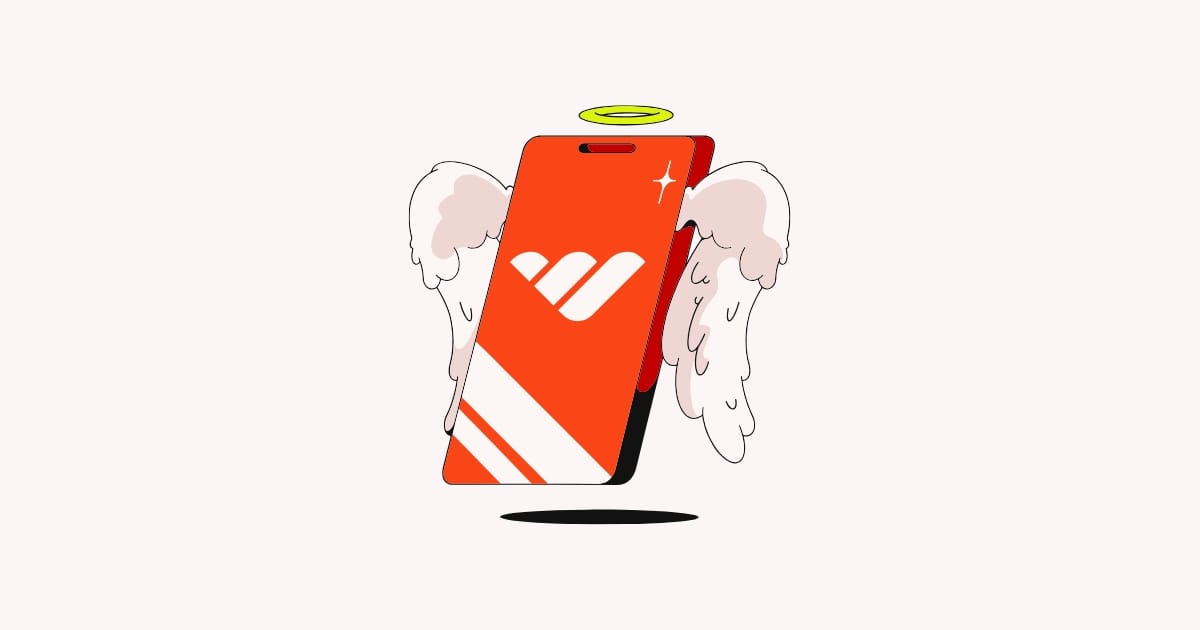
First, pick a business that actually excites you. Browse the 87+ ideas above and find one that feels doable and fun.
Love the idea of opening a coffee shop, but don’t have the cash or experience? That’s a hard pass for now.
Focus on what you enjoy and what you’re good at. When your small business vibes with your skills and passions, sticking with it and making it work becomes way easier.
2. Research the market
Once you’ve picked a business idea, you need to check if it’s actually got potential. Here’s how to do it, step by step:
- Scope out the competition: Look online and in your area to see who’s already doing what you want to do. Check websites, social media, and review sites to see what they’re offering and how much they charge.
- Identify gaps: Spot what’s missing. Are people complaining about slow service, high prices, or limited options? That’s your chance to offer something better.
- Know your audience: Think about who would actually pay for your product or service. Age, location, interests, income, and habits all matter. Make a “dream customer” profile.
- Validate demand: Ask around, post polls on social media, or run small surveys to see if people would actually buy what you’re offering. Even friends and family feedback counts at this stage.
- Check pricing & feasibility: See what others charge and figure out if you can compete while making money. Factor in your costs, time, and skills.
- Make a decision: If there’s interest, gaps you can fill, and room to make money, go for it. If not, go back to step one and tweak your idea or pick a new one.
3. Create a business plan
Think of a business plan as your roadmap. It lays out what your business is, how it will make money, and what steps you need to take to get it off the ground.
A solid plan should include:
- Your goals: What do you want to achieve in the short term and long term?
- Your strategy: How will you reach customers, sell your product, and grow your business?
- Potential roadblocks: What challenges might come up, and how will you handle them?
- Financials: How much money will you need to start, and how much do you expect to make?
Having a clear plan is especially important if you want to ask for outside funding, as investors and banks want to see that you’ve thought things through.
4. Choose a business structure

Your business structure affects your taxes, liability, and how your business is managed. In the U.S., the main options are:
- Sole Trader: You run the business as an individual. It’s the simplest and cheapest option, but you’re personally responsible for any debts or legal issues.
- Partnership: Two or more people share ownership, profits, and responsibilities. Like a sole proprietorship, partners are personally liable, so make sure you have a solid agreement in place.
- Limited Liability Company (LLC): Offers liability protection for your personal assets and flexible tax options. It’s a popular choice for small businesses that want some protection without too much paperwork.
- Corporation (C-Corp or S-Corp): A separate legal entity from its owners. This structure protects personal assets and makes it easier to raise capital, but it’s more complex and comes with stricter rules and taxes.
Take the time to research each structure, and consider consulting a lawyer or accountant to pick the one that fits your business goals and risk tolerance.
5. File for relevant licenses and permits
Before you start operating, make sure your business is legal. The licenses and permits you need depend on your business type, location, and industry.
Common examples include:
- General business license: Most cities or counties require this to operate legally.
- Sales tax permit: Needed if you sell physical products.
- Health permits: Required for food-related businesses.
- Professional licenses: Certain industries—like cosmetology, real estate, or finance—require specific credentials.
Check both federal and state/local requirements, as some licenses may overlap.
6. Set up your business finances

One of the biggest mistakes new business owners make is mixing personal and business money. It makes tracking expenses, taxes, and profits way more complicated than it needs to be.
Before you launch, open a separate business bank account. This keeps your finances clean and professional, and it makes tax time much easier.
Other tips to get your finances right from the start:
- Get an EIN (Employer Identification Number): This is like a Social Security number for your business, needed for taxes and opening a business account.
- Consider accounting software: Tools like QuickBooks or Wave make tracking income and expenses simple.
- Set up a bookkeeping system: Even a simple spreadsheet can help you stay on top of cash flow.
Starting with organized finances will save you headaches and make your business look legit to banks, investors, and even customers.
7. Get your business tools
Before you launch, make a list of the essentials you’ll need to run your business smoothly.
Ask yourself:
- Do I need accounting software to track income and expenses?
- Are there physical items or equipment required for my work?
- How will I accept payments – online, in-person, or both?
Getting these tools in place early means you won’t be scrambling after launch, and you’ll start off looking professional from day one.
8. Market your business
Don’t wait until launch day to get the word out. Start marketing early.
Set up your website, socials, and content in advance, and start teasing what you’re offering. Run ads, post behind-the-scenes sneak peeks, or share tips related to your niche.
The goal is to build hype and get people interested before you even officially launch.
9. Launch your small business
You’re live. Time to get your first customers, track what’s working, and start making real moves. After launch, focus on growing your audience, improving your marketing, and refining your products or services.
Don’t stress about perfection, iterate as you go and scale when you’re ready.
Launch your small business today with Whop
Starting a business is simple with Whop.
From courses and ebooks to coaching, local services, or community memberships, you can sell it all in one place.
With built-in creating, hosting, payments, analytics, and a marketplace full of ready-to-buy customers, Whop gives you everything you need to launch, manage, and grow.
Ready to build your business? Create your whop and start selling today.
FAQs for starting a small business
1. What are the easiest small businesses to start with low investment?
Some of the easiest low-cost business ideas include:
- Pet sitting
- Online coaching
- Cleaning services
- Selling digital products
- Voice acting
- Selling custom engraved gifts
These typically require under $500 to get started and can be launched from home or with minimal equipment.
2. What small businesses can I run entirely from home?
You can run many businesses from home, such as:
- Home tutoring
- Meal prep services
- Virtual assistant work
- Freelance writing or editing
- Selling digital products (ebooks, templates, courses)
- Handmade crafts or custom jewelry
3. Which small businesses have the highest earning potential?
Some business ideas that can scale into high-income ventures include:
- Selling digital products (courses, tools, communities, coaching)
- Flipping houses
- Airbnb hosting
- Owning a food truck or coffee shop
- Coaching or consulting
- Affiliate marketing with a strong audience
4. Do I need certifications or licenses to start a small business?
It depends on the business type:
- Yes: personal training, food services, pet grooming, coaching (optional)
- No: tutoring, reselling, cleaning, virtual assistant
Always check local laws for business licenses, health permits, or insurance requirements.
5. Can I start a small business while working a full-time job?
Absolutely. Many businesses—like affiliate marketing, content creation, tutoring, or reselling—are great side hustles that can be done on weekends or evenings.
6. How much can I expect to earn per month?
Earnings vary by effort, niche, and business model:
- Service-based (cleaning, tutoring): $500–$5,000/month
- Product-based (digital or physical): $1,000–$20,000+/month
- Scalable ventures (coaching, SaaS, real estate): potentially $10,000+/month
7. What tools do I need to start a digital product business?
- A platform like Whop, Gumroad, or Shopify
- Design tools (Canva, Figma)
- Content creation software (Notion, Google Docs, CapCut)
- A website or storefront
8. How do I know which small business idea is right for me?
Ask yourself:
- What am I good at?
- What do I enjoy doing?
- What’s the demand like in my area or online?
- Can I realistically commit time and/or capital to this?
9. What’s the first step to getting started?
Start by choosing a business idea that matches your interests, skills, and lifestyle. Then:
- Validate the idea through market research.
- Create a business plan.
- Set up legal and financial essentials.
- Start small, iterate, and scale.
10. What are some common mistakes new small business owners make?
After starting a small business, most people might do the following mistakes:
- Forgetting about marketing until it's too late
- Failing to put themselves in the shoes of the customer
- Undercharging because they lack confidence
- Trying to do everything instead of picking a niche


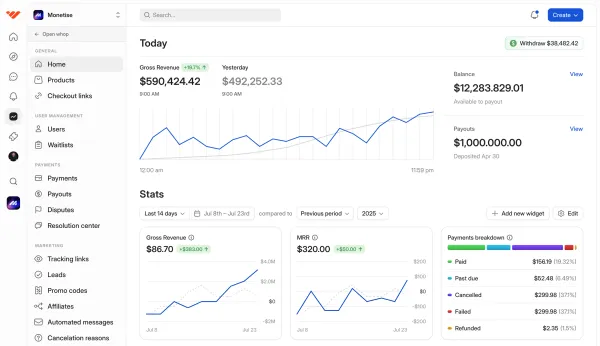

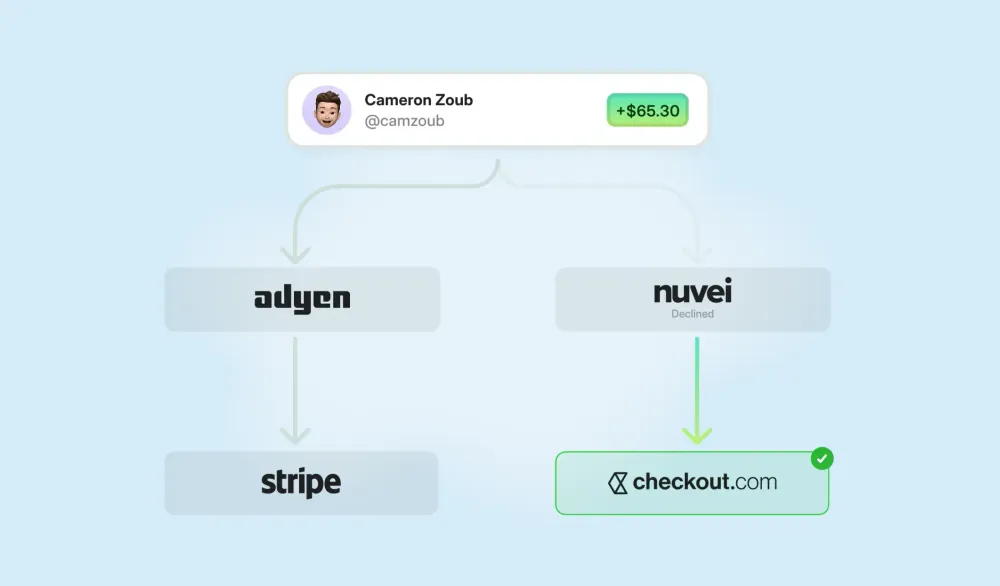

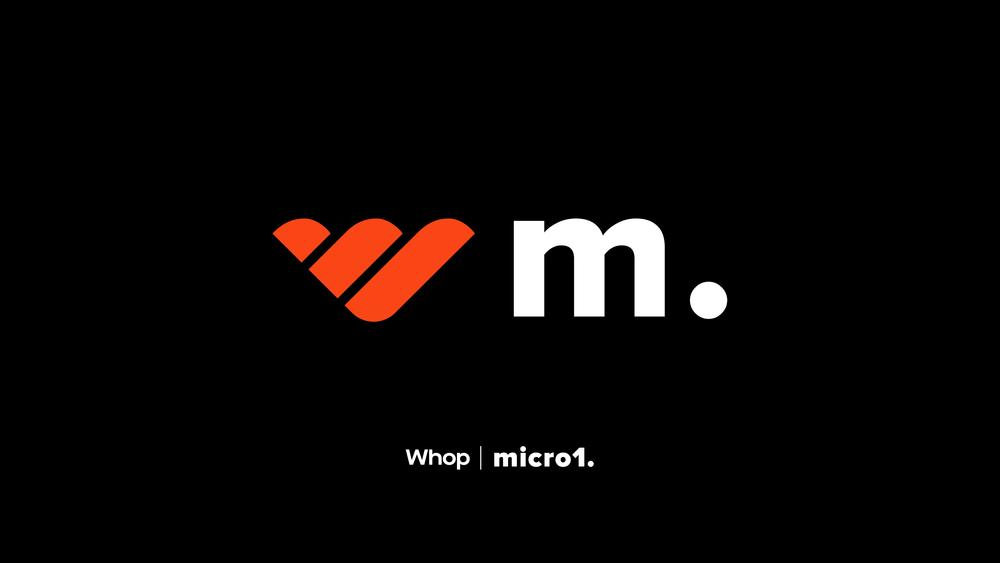


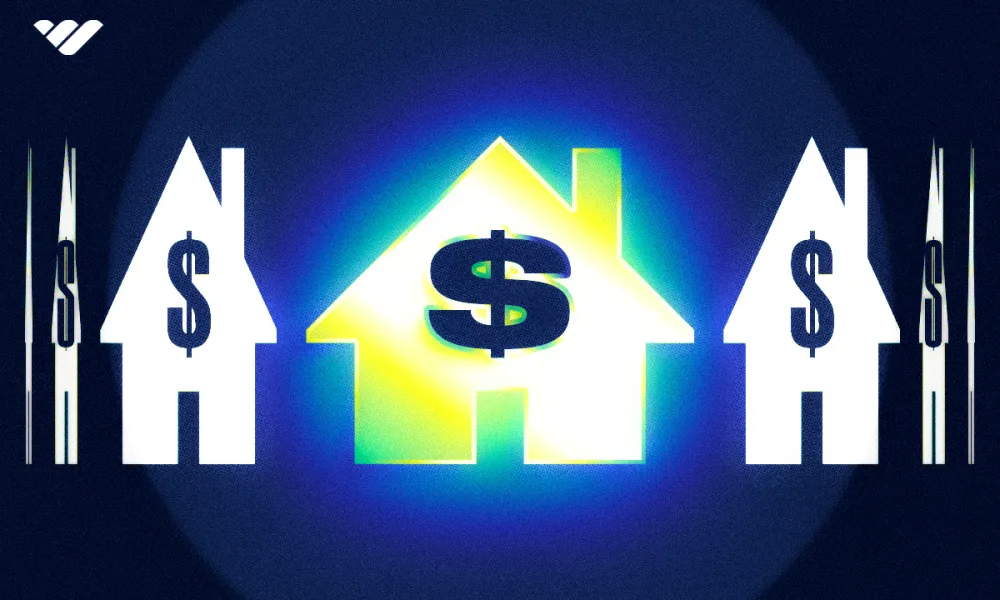
![80 remote side hustles to make money from anywhere [2026]](/blog/content/images/size/w1000/2025/11/tablet-designer-home-opt.webp)



